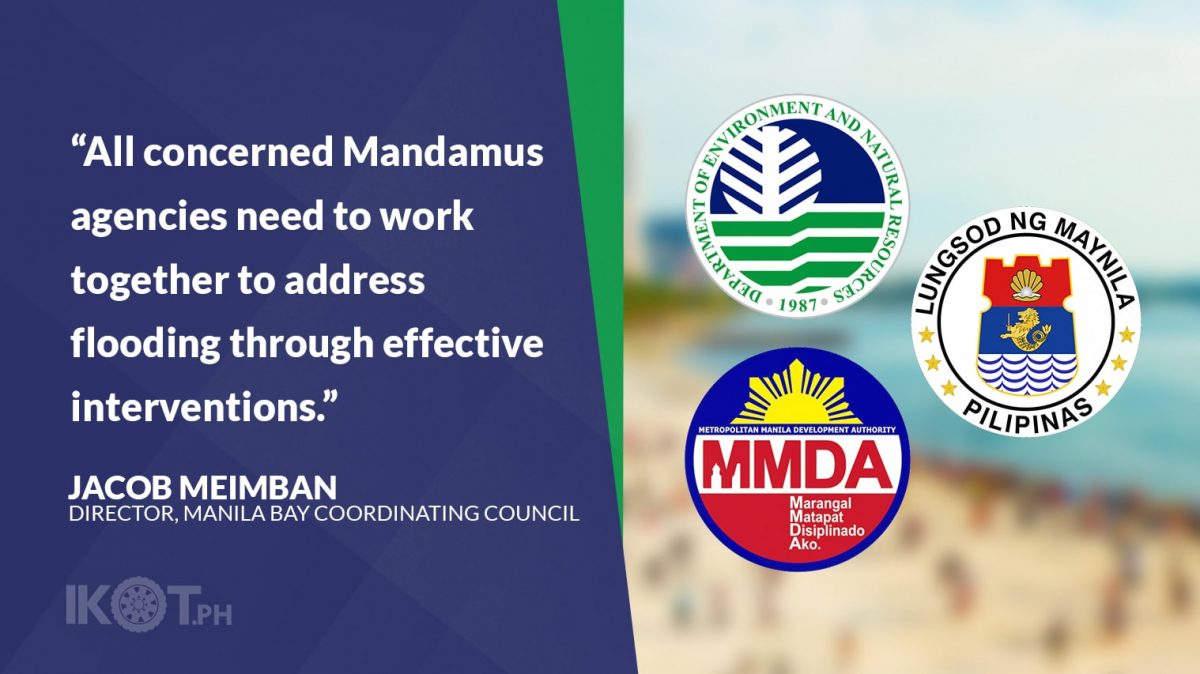The Department of Environment and Natural Resources (DENR)—in coordination with the mandamus agencies of the Manila Bay rehabilitation—has committed to strengthening the implementation of immediate flood control strategies and long-term defenses following the flooding in Manila recently.
The DENR, through the Manila Bay Coordinating Office (MBCO), held an interagency meeting with the Department of Public Works and Highways (DPWH), the Metropolitan Manila Development Authority (MMDA), and the Manila city government for the “reinforcement of collective actions to address the recent flooding experienced in the city of Manila.”
DENR Undersecretary for Policy, Planning, and International Affairs Jonas Leones pointed out that the holistic design of the Manila Bay rehabilitation already involves mitigating measures to accommodate heavy rains and prevent flooding.
“A part of the overall rehabilitation plan is to install mitigating strategies and infrastructures that address flooding.”
“A part of the overall rehabilitation plan is to install mitigating strategies and infrastructures that address flooding. These measures, which are managed by the DPWH and MMDA, are necessary as these ultimately affect the Manila Bay waters,” Leones said.
Meanwhile, MBCO Director Jacob Meimban said Taft-United Nations, Padre Faura, and Ermita-Malate areas that have experienced heavy flooding last week will be prioritized as these are low-lying and flood-prone areas.
“The DPWH and MMDA, with the support of the DENR and city of Manila, are now working on interventions for the declogging of drainage canals, especially in the identified areas.”
“The DPWH and MMDA, with the support of the DENR and city of Manila, are now working on interventions for the declogging of drainage canals, especially in the identified areas,” Meimban explained.
He noted that the declogging operations last year have uncovered a significant amount of plastic bottles and grease and oil build-up along drainage canals in Manila. These were observed to come from business establishments and the wanton disposal of garbage in the streets.
During the interagency meeting, the DPWH also sought assistance from the Maynilad Water Services Inc. in the cleanup of drainage lines and disposal of wastes after declogging operations. The water concessionaire committed to help in the declogging operations in the target areas, especially along their sewer lines.
For the DENR’s part, Meimban said the agency is planning to provide funding for the declogging operations as well as install mobile pumping stations in the Baywalk area, reconstruct floodgates, and devise other flooding interventions in coordination with other government agencies.
During the meeting, the DPWH will work on the long-term plans to abate flooding
around Manila, especially in the city’s low-lying areas by constructing more box culvert canals and pumping station along T.M. Kalaw and Taft Avenue, in order for the floodwaters to recede immediately.
The measures include the construction of additional drainage connection systems and box culverts, construction of pumping stations and interceptors, and equipment to remove wastes clogging the drainage pipes.
Meimban said that the pipes clogged with waste and the drainage canals with dead-end connections coupled with the extreme weather condition may have contributed to the flooding.
He emphasized that all concerned Mandamus agencies need to work together to address flooding through effective interventions.


